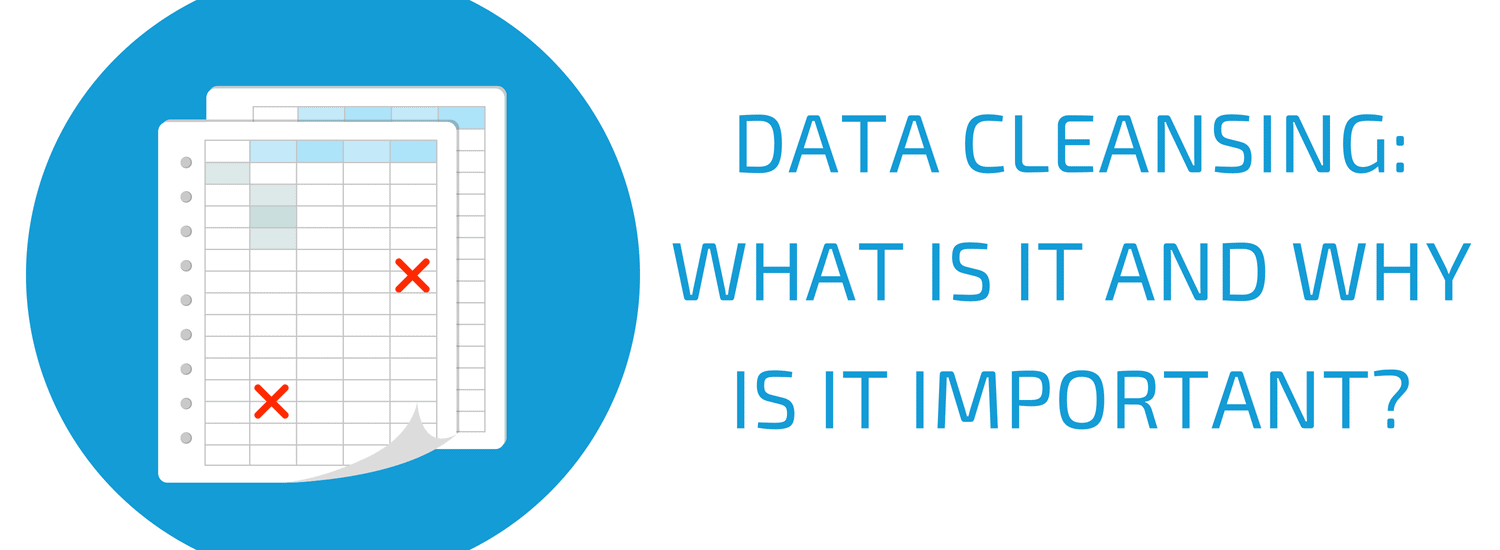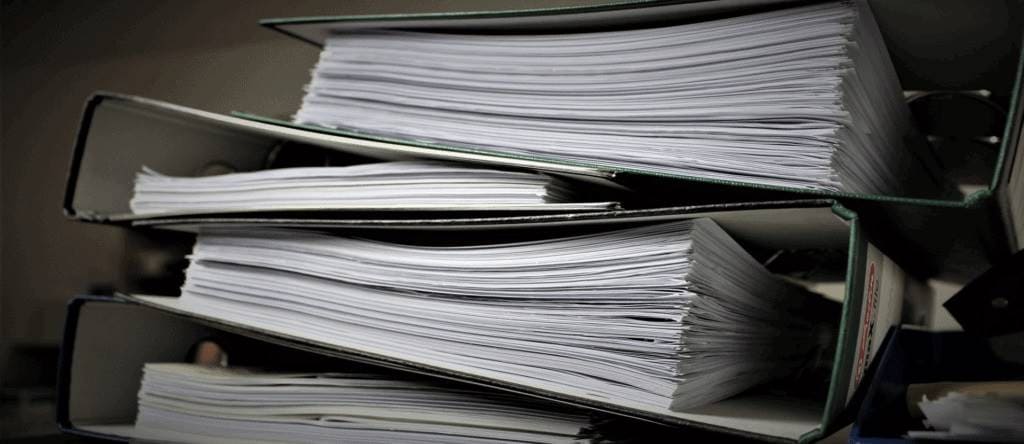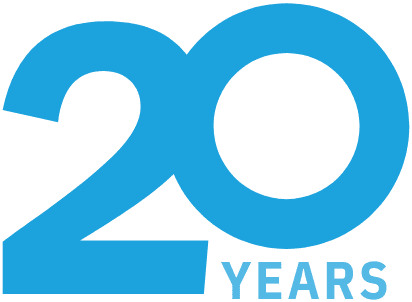
With the recent focus on cybersecurity and information security, another topic commonly brought up is data cleansing. But what exactly is data cleansing, and why is it important? In this article, we’ll explore the importance of data cleansing, and outline why both individuals and businesses should practice good data cleansing techniques. To learn more about information management, contact the experts at Blue-Pencil now!
Ready to keep your information safe and organized?
What is Data Cleansing?

Data cleansing is a form of data management. Over time, individuals and businesses accumulate a lot of personal information! Eventually, information becomes outdated. For example, over 10 years you may change your address, or your name, and then change your address again!
Data cleansing is a process in which you go through all of the data within a database and either remove or update information that is incomplete, incorrect, improperly formatted, duplicated, or irrelevant (source). Data cleansing usually involves cleaning up data compiled in one area. For example, data from a single spreadsheet like the one shown above.
Though data cleansing does and can involve deleting information, it is focused more on updating, correcting, and consolidating data to ensure your system is as effective as possible (source).
The data cleansing process is usually done all at once and can take quite a while if information has been piling up for years. That’s why it’s important to regularly perform data cleansing.
How often you or your business should cleanse depends on a variety of factors, such as how much information you have. It’s also important not to cleanse too often – or you may waste money by performing unnecessary actions. Click here to learn more about how often you should data cleanse.
Why is Data Cleansing So Important?
Though you often hear about data cleansing in the professional world, data cleansing is important for both businesses and individuals.
Data Cleansing For Individuals

Individuals can accumulate a lot of personal information on their computers in just a short period of time. Credit card details or banking information, tax information, birthdates and legal names, mortgage information, and more can actually be stored on various files on your computer. For example, if you have a digital copy of your T4, that is a lot of information on just a few pages!
Data cleansing is so important for individuals because eventually, all this information can become overwhelming. It can be difficult to find the most recent paperwork. You may have to wade through dozens of old files before you find the most recent one. Disorganization can lead to stress, and even lost documents!
Data cleansing ensures you only have the most recent files and important documents, so when you need to, you can find them with ease. It also helps ensure that you do not have significant amounts of personal information on your computer, which can be a security risk.
Data Cleansing For Businesses

Businesses generally hold on to a lot of personal information – business info, employee info, and often even customer or client information. Unlike individuals, businesses must ensure that the personal information of many different people and organizations is kept safe and organized.
Having accurate information is important for everyone. It’s important to have accurate employee information. It’s great to have accurate customer information, so you can get to know your audience better and contact customers if needed. Having the newest, most accurate information will help you get the most out of your marketing efforts.
Data cleansing is also important because it improves your data quality and in doing so, increases overall productivity. When you clean your data, all outdated or incorrect information is gone – leaving you with the highest quality information. This ensures your team do not have to wade through countless outdated documents and allows employees to make the most of their work hours (source).
Ensuring you have correct information also helps reduce some unexpected costs. For example, you may print incorrect information onto company letterheads – and realize it must all go to waste once that error is found! Having consistent errors in your work can also harm your company’s reputation.
Data Cleansing Tips & Methods
Now that you know what data cleansing is and why it’s so important, you may be wondering how you can start the data cleansing process! With data cleansing, there is no ‘one size fits all.’ Your data cleansing methods will often depend on the type of data you have. However, here are some general tips to help you get started.
Assess Your Data

Data cleansing usually involves cleaning data from a single database, such as a workplace spreadsheet. If your information is already organized into a database or spreadsheet, you can easily assess how much data you have, how easy it is to understand, and what may or may need updating. If your data is currently in individual files and spread across your computer, you will want to compile it all so you can begin assessing it as a whole.
Brendan Bailey from Towards Data Science outlines some questions to ask for initial data assessments, including:
- Does my data seem to make sense?
- Are there any duplicates, and if so, is that okay?
- Does numerical data add up and make sense?
- Are there spelling errors or numbers where there shouldn’t be?
This initial assessment can help you get a better grasp of how much you need to do. If you notice all your data is from 2005, you may have your work cut out for you! But if you simply notice a few outdated numbers and a spelling mistake or two, a quick update may be all you need.
Clean Data In A Separate Spreadsheet
Before you make changes, it’s a good idea to create a copy of your spreadsheet and make any changes within the copy instead of the original. This is to help protect you and your information in case you make a mistake! When working with company or business information, a single mistake can be serious. If you’re not sure how to make a duplicate, watch the quick video below!
Once you are mistake-free and have finished cleaning up all your data and information, you can copy your updated sections back to your original spreadsheet. It may take a bit of extra time and effort but it will be worth it for peace of mind and ensuring your efforts have not gone to waste.
Make Use Of Functions
It can be difficult to clean up every single error or outdated piece of data manually! When working with your spreadsheet, make use of functions and let your program work for you! If you are using Microsoft Excel, there are many “functions” to choose from that will actually do some of the cleansing for you.
Check out the video below to see a very simple data cleanse in Microsoft Excel.
As seen in the video above, “remove duplicates” is a function that you can use in Excel. This function will work for text-based columns. If you have accidentally entered the same employee information or contact information twice, the “remove duplicates” function can go through the column and get rid of all copies for you.
Use Data Cleansing Software
If you are not sure how to properly cleanse your data but desperately need a good clean up, there is actually data cleansing software available to help you do this! Of course, the software comes with a price tag, but may be worth it for those who just don’t have the time or the know-how to perform cleansing techniques on their own.
How Data Management Can Help You

Oftentimes businesses and even individuals have such a hard time cleaning up their data because they leave their data for too long. Data can quickly become a mess, filled with numerical and spelling errors, unnecessary duplicates, and confusing, outdated data that you’re not even sure how it got there in the first place!
Data management can help the data cleansing process go much more smoothly. Data management is the development and execution of processes, architectures, policies, practices, and procedures in order to manage the information generated by an organization. Data management includes a wide variety of topics including:
- Database management
- Data security
- Document and record storage
- Records management
- Data sharing
- And more!
When you have great data management practices in place, your files will be much less likely to get out of hand with incorrect or outdated data. Working with a data management company can help you keep your information properly managed throughout its entire lifecycle.
Keep Your Information Safe With Blue-Pencil!

Blue-Pencil helps empower Canadian organizations to reach new heights with friendly and efficient document management services. Customer service is not only a slogan but something we practice by investing in our strategic partners.
Located in Oakville, we have grown our document security business over the past 10 years, serving more than 6,000 organizations including small and medium-sized companies as well as Fortune 500 businesses.
“Blue-Pencil has always been there when we need them.”
–Paul Charlebois, Read more testimonials here!
We have recently launched two new divisions; Documents Storage and Records Management division and Document Imaging and Scanning Solutions division. This allows us to offer full circle, comprehensive solutions for information security management. We service the GTA and surrounding cities – click here for a full list of our service areas. If you’d like to learn more about us and what we can do for you contact us today!
Sources:
chi2innovations.com / towardsdatascience.com / semagroup.com.au / edq.com / searchdatamanagement.techtarget.com

